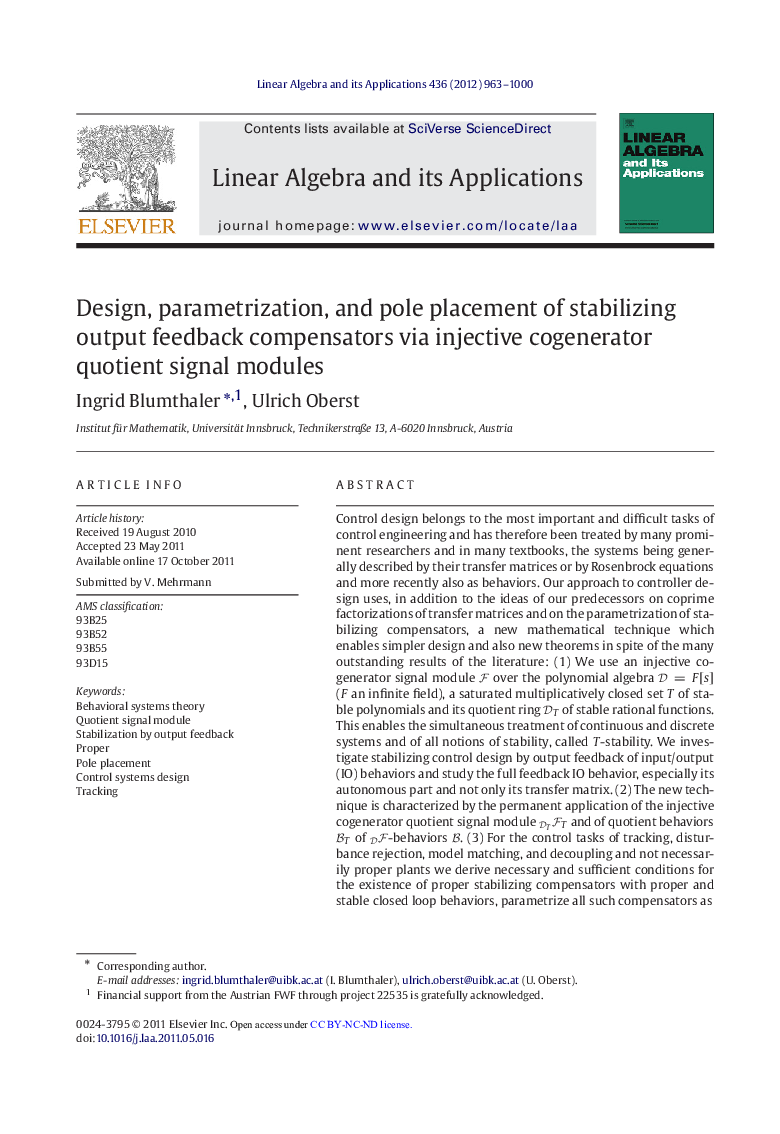| Article ID | Journal | Published Year | Pages | File Type |
|---|---|---|---|---|
| 6416783 | Linear Algebra and its Applications | 2012 | 38 Pages |
Control design belongs to the most important and difficult tasks of control engineering and has therefore been treated by many prominent researchers and in many textbooks, the systems being generally described by their transfer matrices or by Rosenbrock equations and more recently also as behaviors. Our approach to controller design uses, in addition to the ideas of our predecessors on coprime factorizations of transfer matrices and on the parametrization of stabilizing compensators, a new mathematical technique which enables simpler design and also new theorems in spite of the many outstanding results of the literature: (1) We use an injective cogenerator signal module F over the polynomial algebra D=F[s] (F an infinite field), a saturated multiplicatively closed set T of stable polynomials and its quotient ring DT of stable rational functions. This enables the simultaneous treatment of continuous and discrete systems and of all notions of stability, called T-stability. We investigate stabilizing control design by output feedback of input/output (IO) behaviors and study the full feedback IO behavior, especially its autonomous part and not only its transfer matrix. (2) The new technique is characterized by the permanent application of the injective cogenerator quotient signal module DTFT and of quotient behaviors BT of DF-behaviors B. (3) For the control tasks of tracking, disturbance rejection, model matching, and decoupling and not necessarily proper plants we derive necessary and sufficient conditions for the existence of proper stabilizing compensators with proper and stable closed loop behaviors, parametrize all such compensators as IO behaviors and not only their transfer matrices and give new algorithms for their construction. Moreover we solve the problem of pole placement or spectral assignability for the complete feedback behavior. The properness of the full feedback behavior ensures the absence of impulsive solutions in the continuous case, and that of the compensator enables its realization by Kalman state space equations or elementary building blocks. We note that every behavior admits an IO decomposition with proper transfer matrix, but that most of these decompositions do not have this property, and therefore we do not assume the properness of the plant. (4) The new technique can also be applied to more general control interconnections according to Willems, in particular to two-parameter feedback compensators and to the recent tracking framework of Fiaz/Takaba/Trentelman. In contrast to these authors, however, we pay special attention to the properness of all constructed transfer matrices which requires more subtle algorithms.
